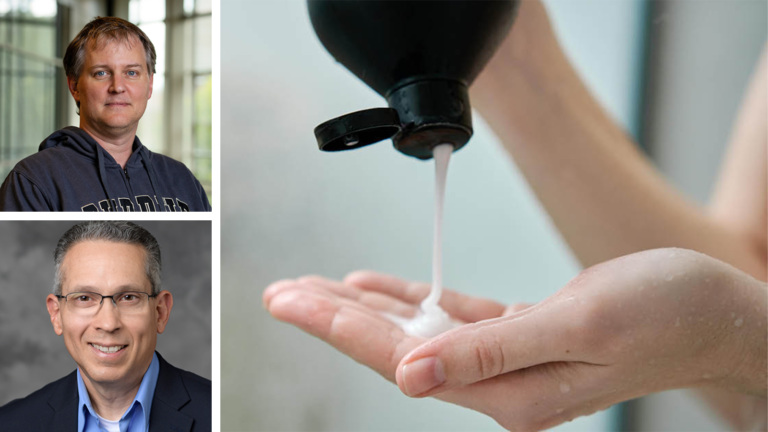Soy-based compounds show similar or superior surface activity compared to commercial petroleum-based ones
Soy-based materials developed at Purdue University have been proven to reduce surface tension in a liquid as well as or better than commercial petroleum-based materials. The new materials could make personal care products more sustainable while maintaining product quality.
Petroleum-based surfactants are used in most conventional shampoos, conditioners and antimicrobial washes.
Jeffrey Youngblood and Carlos Martinez, researchers in the College of Engineering, have developed patent-pending soybean oil- and hydrogenated soybean oil-based cationic surfactants. Youngblood is a professor and Martinez is an associate professor in the School of Materials Engineering. Youngblood also is an affiliate of Environmental and Ecological Engineering.
“A surfactant is a chemical compound that reduces a liquid’s surface tension and lets it spread out to wet a surface,” Youngblood said. “There is a lack of bio-based surfactants on the market, which is a sustainability issue.”
Youngblood and Martinez disclosed the soy-based surfactants to the Purdue Innovates Office of Technology Commercialization, which has applied for a patent to protect the intellectual property. Industry partners interested in developing or commercializing them should contact Dipak Narula, lead technology development liaison and assistant director of business development and licensing — physical sciences, at [email protected] about track code 70130.
Validation and next steps
During tests, the soy-based surfactants exhibited comparable or better surface activity than commercial QA (quaternary ammonium) compounds, CTAB (cetyltrimethylammonium bromide) compounds and DTAB (dodecyltrimethylammonium bromide) compounds.
“Our soy-based surfactants may not impact the performance of personal care products,” Youngblood said. “They can be a drop-in replacement for petroleum-based surfactants; manufacturers will not need a new product or platform to implement them into their processes.”
Youngblood said further research will be conducted on the soy-based surfactants.
“We are currently finishing the cationic portion and writing a paper and will continue to anionic and neutral surfactants,” he said.
The Indiana Soybean Alliance provided funding to support Youngblood and Martinez’s research.

